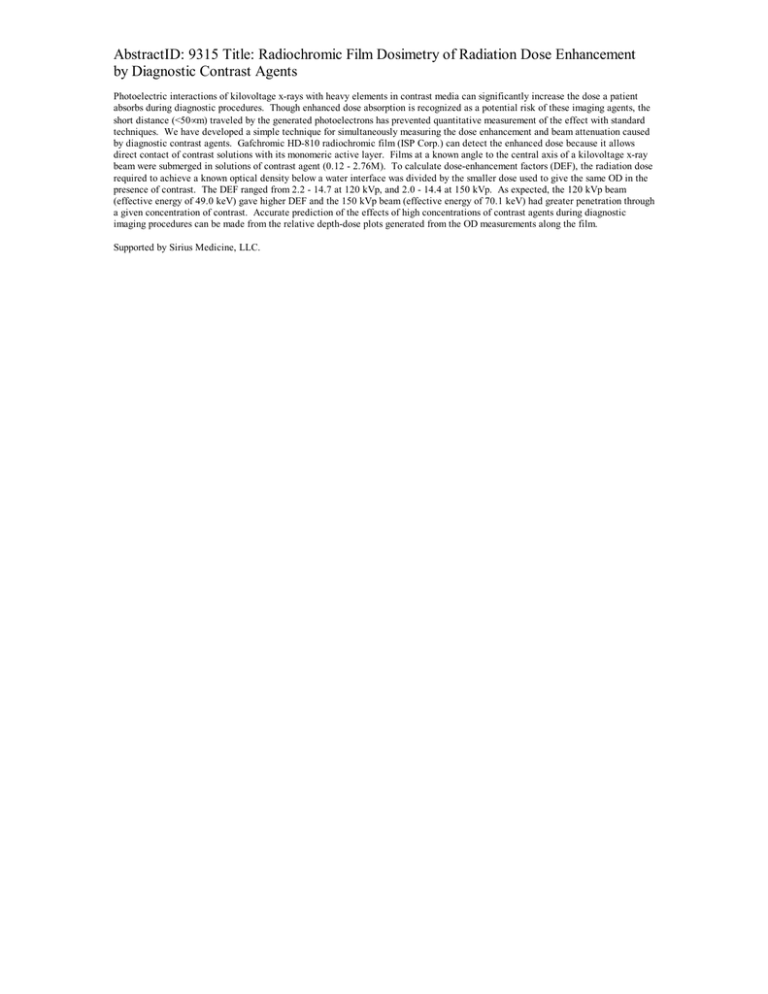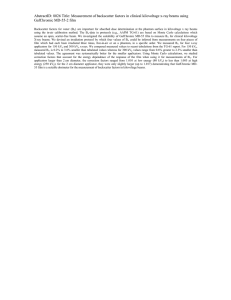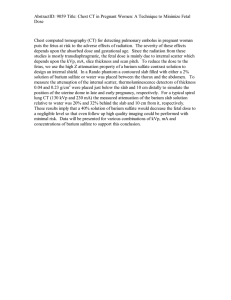AbstractID: 9315 Title: Radiochromic Film Dosimetry of Radiation Dose Enhancement
advertisement

AbstractID: 9315 Title: Radiochromic Film Dosimetry of Radiation Dose Enhancement by Diagnostic Contrast Agents Photoelectric interactions of kilovoltage x-rays with heavy elements in contrast media can significantly increase the dose a patient absorbs during diagnostic procedures. Though enhanced dose absorption is recognized as a potential risk of these imaging agents, the short distance (<50µm) traveled by the generated photoelectrons has prevented quantitative measurement of the effect with standard techniques. We have developed a simple technique for simultaneously measuring the dose enhancement and beam attenuation caused by diagnostic contrast agents. Gafchromic HD-810 radiochromic film (ISP Corp.) can detect the enhanced dose because it allows direct contact of contrast solutions with its monomeric active layer. Films at a known angle to the central axis of a kilovoltage x-ray beam were submerged in solutions of contrast agent (0.12 - 2.76M). To calculate dose-enhancement factors (DEF), the radiation dose required to achieve a known optical density below a water interface was divided by the smaller dose used to give the same OD in the presence of contrast. The DEF ranged from 2.2 - 14.7 at 120 kVp, and 2.0 - 14.4 at 150 kVp. As expected, the 120 kVp beam (effective energy of 49.0 keV) gave higher DEF and the 150 kVp beam (effective energy of 70.1 keV) had greater penetration through a given concentration of contrast. Accurate prediction of the effects of high concentrations of contrast agents during diagnostic imaging procedures can be made from the relative depth-dose plots generated from the OD measurements along the film. Supported by Sirius Medicine, LLC.



